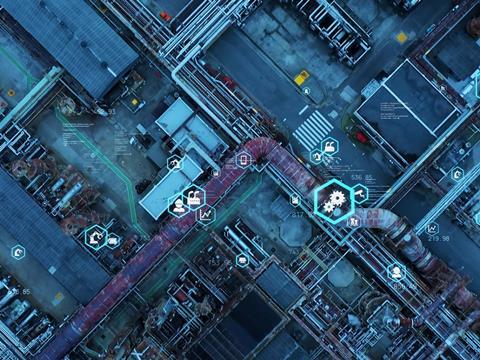
In a series of 5 Innovation Spotlight articles, AG Solution goes beyond the buzzwords and explains how a digitalization journey can be a means to dealing with very practical problems and challenges in your specific environment. In this edition, we focus on traceability.
MES is all about managing the production and ensuring the product quality. But increasingly, organizations are expecting a detailed and complete insight into the production data, during and after the production. This can only be realized by connecting the MES system with all relevant data sources. A complex but worthwhile endeavour.
Data used to be of secondary importance, a side-effect of the actual production which most manufacturing organizations preferred to ignore. Nowadays, these production data have become very valuable and sometimes even critical for the organization.
Think only of a product flaw generating several complaints. Without an in-depth insight into what caused the problem and which materials/lots/operating machines were involved, it is very difficult to deal with such a problem effectively. But very often, the required data (on operators, alerts, used resources, equipment configuration) are hard to recover or not available at all.
Additionally, this lack of available data can cause lots of inefficiencies: the supply chain department needs to make phone calls to inquire about the status of an order, the quality department often struggles to find answers. Moreover, the plant managers or C-level executives don’t have aggregated data available to assess the efficiency and effectiveness of the manufacturing sites.
And there are other areas where Traceability solutions can contribute significantly. The time to release a product, for instance, can significantly be reduced by using a MES to review by exception (i.e. when a deviation from the expected result occurs) instead of reviewing all process parameters and critical data belonging to a batch. The latter procedure can be long and painstaking, sometimes up to two days, as was the case for one of our customers. With reviews by exception, most of this time is freed up, allowing the team to focus on value-adding activities.
Wanted: interfaces
The root cause of such data-related problems is the lack of interfacing between the production environment and the rest of the organization. Business applications such as ERPs are consequently not automatically updated in terms of resources, material, and personnel. Which makes it hard to execute any performance analysis or cost calculations.
This lack of interfaces also causes other inconveniences. It will be difficult to trace materials through physical equipment such as vessels, silos, or tanks, to compile production data and to translate them into business information (including in-work inventory, raw material usage, and energy usage), and to deliver calculated data to business applications. Data such as cycle time calculation and resource utilization (both equipment and personnel) can improve the overall decision making and the predictions of the results of a production run based on a continuous process and operations analysis. If they are available at all.
MES traceability module to the rescue
A well-connected MES traceability module can take care of all that. This means that first and foremost you need to connect your MES system to all relevant equipment and applications that contain relevant data on the one hand, and on the other hand to all business applications that can use this data for analysis, follow-up, scheduling, etc. (see illustration below).
When fully connected, the MES system can start collecting production data from various sources such as sensor readings, equipment states, event data, operator-entered data, transaction data, operator actions, messages.
These data will enable you to:
- Provide reports with production data
- Follow up the real-time status of production, orders and batches
- Run a proactive monitoring system to check if manufacturing processes meet regulatory and process obligations
- Maintain information to enable product tracking and tracing, such as tracing products to specific material lots
- Maintain information for the analysis of local processes and for reporting to higher logistics systems
- Provide product quality information for comparison against specifications
A well-integrated MES traceability module will provide valuable information both during and after production, both to operational and executive divisions. It will ultimately benefit the entire organization by enabling smoother processes and better decisions on all levels.
MES Traceability is the third article in a 5-part series illustrating how MES can contribute to your digitalization strategy. In our next article, we will focus on Quality.
Can’t wait to improve and optimize the traceability of your operations? Contact us today and our experts will help you get started.
This content was sponsored by AG Solution.
















